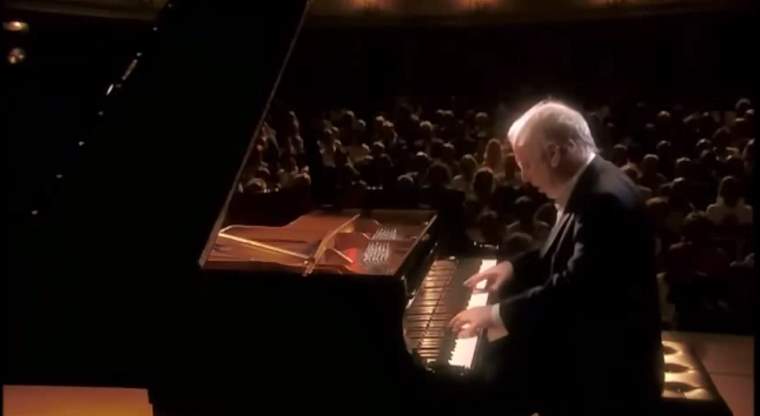One of the most famous and celebrated pianists of the 20th century, Glenn Gould performs Beethoven’s Piano Sonata No. 17 in D minor, Op. 31, No. 2, also known as “The Tempest” (or Der Sturm in German). This performance was recorded in the Canadian classical music television series “Music For a Sunday Afternoon”, originally broadcast on March 19, 1967, marking 140 years after the composer’s death.
Ludwig van Beethoven’s Piano Sonata No. 17
Beethoven holds a key role in the transformation and evolution of the sonata form. Even if he maintains the characteristics initially set by his predecessors, Haydn and Mozart, Beethoven imposes on the sonata his strong personality creating a new, impressive, form of art, in which his own life, with its joys and sorrows, is projected.
With Beethoven, the musical theme acquires remarkable proportions, of such strength, that it imposes itself over the listener’s attention and memory. As the French composer, Vincent d’ Indy once said, with Beethoven, the musical theme turns into a concept that spreads throughout the whole work making it easily recognizable even if harmonic, modal or tonal aspects change.
The fundamental principle of the organization of the Beethoven piano sonata is tonality. We can say that Beethoven perceived tonality as the key to any composition since it leads to a true understanding of the musical form.
Beethoven’s Piano Sonata No. 17 “The Tempest” was composed in 1801-1802 and was nicknamed the “Tempest sonata”, not a name by Beethoven himself but by the Austrian law clerk and associate Anton Schindler (1795-1864), or rather because of Anton Schindler. Schindler was Beethoven’s secretary and after the composer’s death, he told tons of stories, many of them not true (much of Schindler’s information is distrusted by classical music scholars).
According to Schindler, when he asked Beethoven about this sonata, the answer was that if he read Shakespeare’s “The Tempest” he would understand the music.
Movements
Beethoven’s Piano Sonata No. 17 consists of three movements. Each of the movements is in sonata form, though the second lacks a substantial development section.
- Largo – Allegro. The first movement alternates brief moments of seeming peacefulness with extensive passages of turmoil, after some time expanding into a haunting “storm” in which the peacefulness is lost. This musical form is unusual among Beethoven’s sonatas to that date. Concerning the time period and style, it was thought of as an odd thing to write; a pianist’s skills were demonstrated in many ways, and showing changes in tone, technique, and speed efficiently many times in one movement was one of them. The development begins with rolled, long chords, quickly ending with the tremolo theme of the exposition. There is a long recitative section at the beginning of this movement’s recapitulation, again ending with fast and suspenseful passages.
- Adagio. The second movement in B-flat major is slower and more dignified. It mirrors the opening of the first movement both through the use of a rolling recitative-like arpeggio on the first chord, and the rising melodic ideas in the opening six measures, which are reminiscent of the first movement’s recitative. Other ideas in this movement mirror the first, for instance, a figure in the eighth measure and parallel passages of the second movement are similar to a figure in the sixth measure of the first.
- Allegretto. The finale of Beethoven’s Piano Sonata No. 17 is a sonata-rondo hybrid in the key of D minor. It is at first flowing with emotion and then reaching a climax, before moving into an extended development section which mainly focuses on the opening figure of the movement, reaching a climax at measures 169-173. The recapitulation, which is preceded by an extensive cadenza-like passage of sixteenth notes for the right hand, is followed by another transition and then another statement of the primary theme. The refrain undergoes phrase expansion to build tension for the climax of the movement at measure 381, a fortissimo falling chromatic scale.
Sources
- Piano Sonata No. 17 “The Tempest” (Beethoven) on Wikipedia

